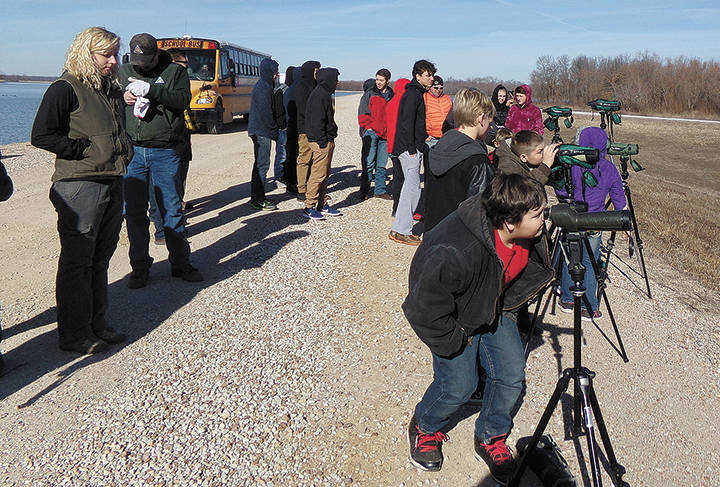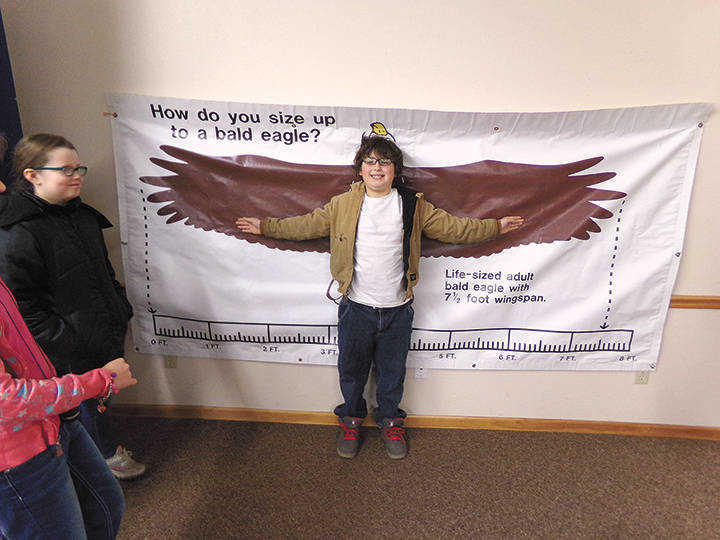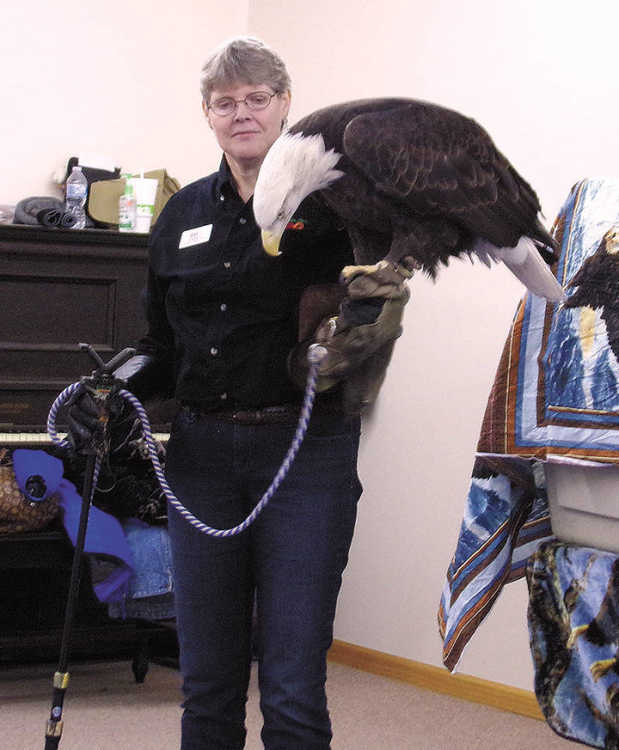Schell-Osage hosts biennial Eagle Days

The Schell-Osage Conservation Area hosted their biennial Eagle Days program this past Saturday drawing elementary students and other visitors from around the area. A program of the Missouri Department of Conservation, Eagles Days coincides with the annual waterfowl migration.
Although visitors could watch bald eagles from afar through spotting scopes at the Schell-Osage CA and interact with hands-on exhibits at the Community Center in Schell City, the highlight of the day was without a doubt Phoenix and Aquila.
Phoenix is a 29-year-old bald eagle. She was in the last group of nine of 74 bald eagles released by MDC in Missouri in the late 1980s. Phoenix was fitted with a radio transmitter so that she could be tracked after she was released. After she was released, there was no movement from her tracker for three days and when she was found, she was on the ground and weak. It is unknown exactly what happened, but she was unable to survive on her own and became an ambassador for her species at Dickerson Park Zoo. Bald eagles like Phoenix can live past 25 years old and typically feed on fish and waterfowl. They do not develop the white hood feathers until they are four or five years old. About the same time, they take a mate and will stay with that mate for life and return each year to the area in which they were hatched.

Also on hand Saturday was Aquila, a golden eagle, who was injured when he tried to capture a coyote for a meal. The coyote was in a legally set trap near a fence. While trying to get his claws free from the coyote, Aquila injured his wing on the fence. While he can still fly, his endurance is not enough to allow him to live in the wild. Mexico’s national bird, only four golden eagles were spotted in Missouri this past year.
Golden eagles are slightly bigger than bald eagles and in both species, the female is the larger of the sexes. Their diets are different, bald eagles feed on fish and the occasional duck or goose, while golden eagles feed on mammals up to and including coyotes and deer. Bald Eagles dive at up to 100 miles per hour. Golden eagles can reach almost 200 mph in a dive. Even though the golden eagles are the larger bird, they have a slimmer build allowing faster speeds in a dive.
Following the presentation, guests were invited to drive out to locations at the Schell-Osage Conservation Area where MDC employees had set up spotting scopes and binoculars for people to watch eagles flying around their nesting areas. An eagle’s nest can be large enough to be seen with the naked eye almost a mile away, and one nest found in Florida weighed more than 4,000 pounds.

Although the Bald Eagle has been removed from the Endangered Species List, it is still protected and hunting it is illegal. For more information on Bald Eagles and Golden Eagles, go to the United States Fish and Wildlife Service website at www.fws.gov or MDC’s website at mdc.mo.gov.
